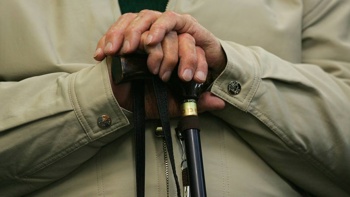
A trove of Aotearoa’s cultural heritage is at risk from climate change, with a sweeping new assessment identifying nearly 2000 archaeological sites threatened by erosion from sea level rise.
While recent studies have pointed to the potentially staggering cost of climate-driven inundation – some $150b worth of public and private assets currently lie in coastal floodplains – less understood is to our invaluable archaeological heritage.
The thousands of centuries-old sites dotted around our coastlines remain immensely important to iwi and hapu and continue to provide researchers direct evidence about past human activity here.
“Archaeological sites, regardless of type, offer opportunities to investigate the past,” University of Auckland PhD researcher Ben Jones said.
“Collectively, they reveal how people interacted, migrated, and lived across Aotearoa, helping us understand past landscapes.”
Now, Jones and fellow researchers have found some 1954 of these sites – or nearly a quarter of all those lying within a kilometre of our shores - could be in danger.
The sites are typically found in or on landforms, like dunes and low-lying sandy barriers, that are considered vulnerable to erosion caused by sea level rise.
About half are middens, where food remains such as shells and bones were once thrown or buried.
/cloudfront-ap-southeast-2.images.arcpublishing.com/nzme/S54AAOF2ABDYHMR3QPQ337BKJM.jpg)
This image shows the remains of a hearth, or fireplace, in a blown-out dune on the Ngunguru Sandspit, northeast of Whangārei. Photo / Simon Bickler
Using radiocarbon dating methods to determine the age of these ancient remains, scientists have reconstructed the abundance and diversity of a range of marine and bird species, long before the arrival of Europeans.
Another quarter of the sites are earthworks like pa, earth ovens or underground storage pits.
While human burial sites like urupa account for just a few hundred of them, these nonetheless hold “immense” cultural value, Jones said.
“These sites are of particular concern due to the potential loss caused by coastal erosion,” he said.
“While inundation is damaging to archaeological sites, erosion permanently removes those sites, eradicating contextual information vital for archaeological preservation and exposing human remains.”
Having worked as an archaeologist here for a decade, Jones said there’d been growing worries among iwi and collaborators about cultural heritage being lost to climate impacts.
“However, the extent of the issue on a national level remained unclear,” he said.
“I was uncertain about the scale of the impact, the specific locations affected, the types of coastlines involved, and the projected timelines of these impacts.”
But just how much lay at risk proved the biggest question.
To answer it, he turned to the Niwa-developed coastal sensitivity index, measuring the vulnerability of areas to sea level rise and other coastal hazards, and the country’s archaeological site database, ArchSite.
/cloudfront-ap-southeast-2.images.arcpublishing.com/nzme/FP7J3FGXLZAUPFQ4O4W37LVYMA.jpg)
An eroding midden at Mangawhai Heads, north of Auckland. Photo / Simon Bickler
With data from the two, Jones and his university colleagues - Professor Mark Dickson, Associate Professors Murray Ford and Dan Hikuroa and Dr Emma Ryan – were able to calculate how many sites were vulnerable, based on their elevation and distance to the shore.
Jones stressed the study, just published in the Journal of Island and Coastal Archeology, marked only a “first pass” - and its method and risk dataset would need to be re-tested and updated over time.
Still, the sheer scale of sites found to be at risk pointed to an urgent need to closely monitor and manage them to avoid widespread loss.
“A ‘one approach fits all’ mindset is not a suitable option for management of archaeological sites with immense cultural value and decisions will need to be tailored to local contexts, involving mana whenua,” Ryan added.
Jones findings have already been provided to the multi-group New Zealand Archaeological Association Climate Change Working Group, and he was currently discussing how best to share the data with iwi.
The study comes after researchers recently identified some 80 per cent of Aotearoa’s marae are built on low-lying coastal land or near flood-prone rivers, with a handful already experiencing “one-in-100 year” floods every year.
This month, Ngāti Hē kaumātua Peter Ririnui said Tauranga’s iconic, 143-year-old Maungatapu Marae may have to be relocated from its harbour-side location within 30 years.
Take your Radio, Podcasts and Music with you









